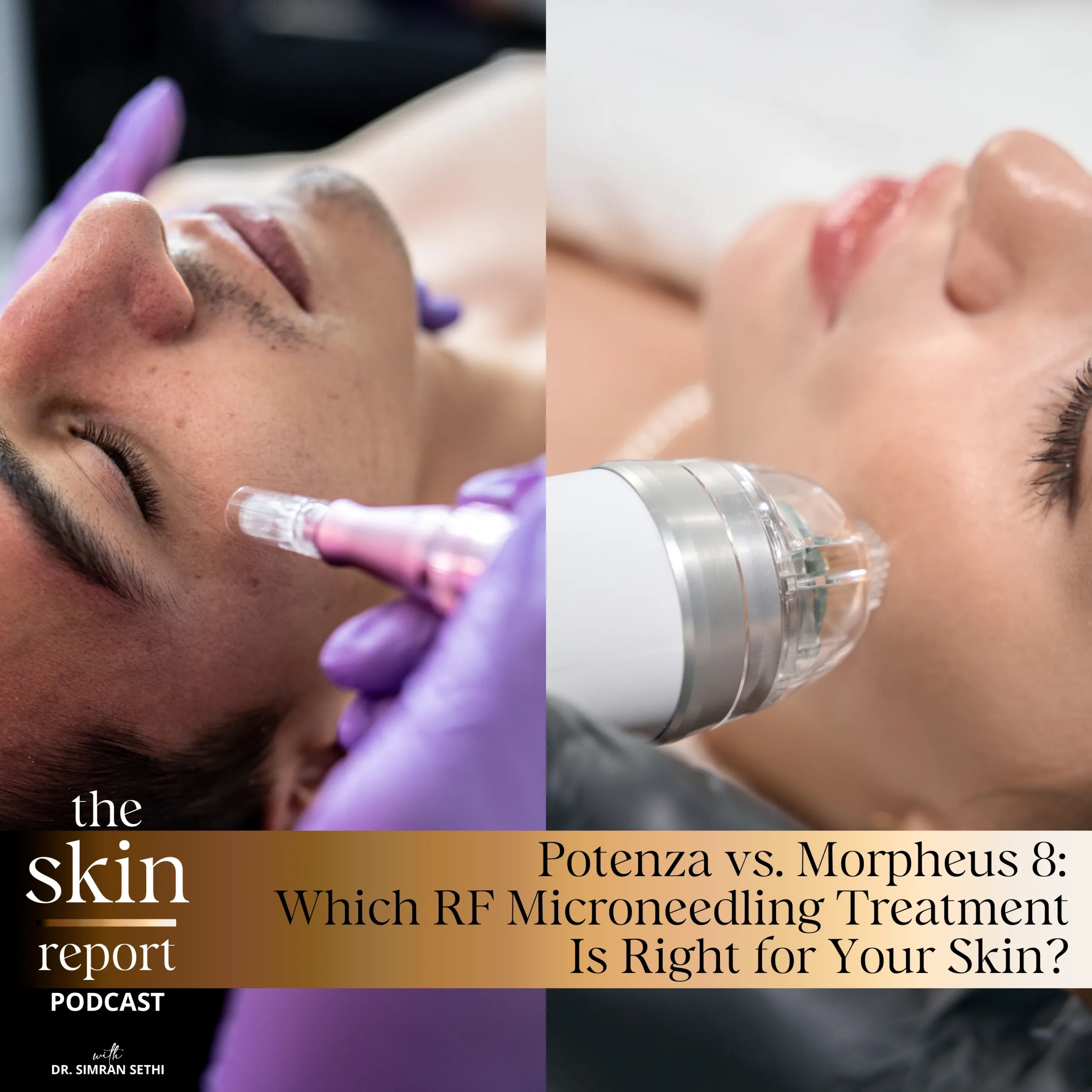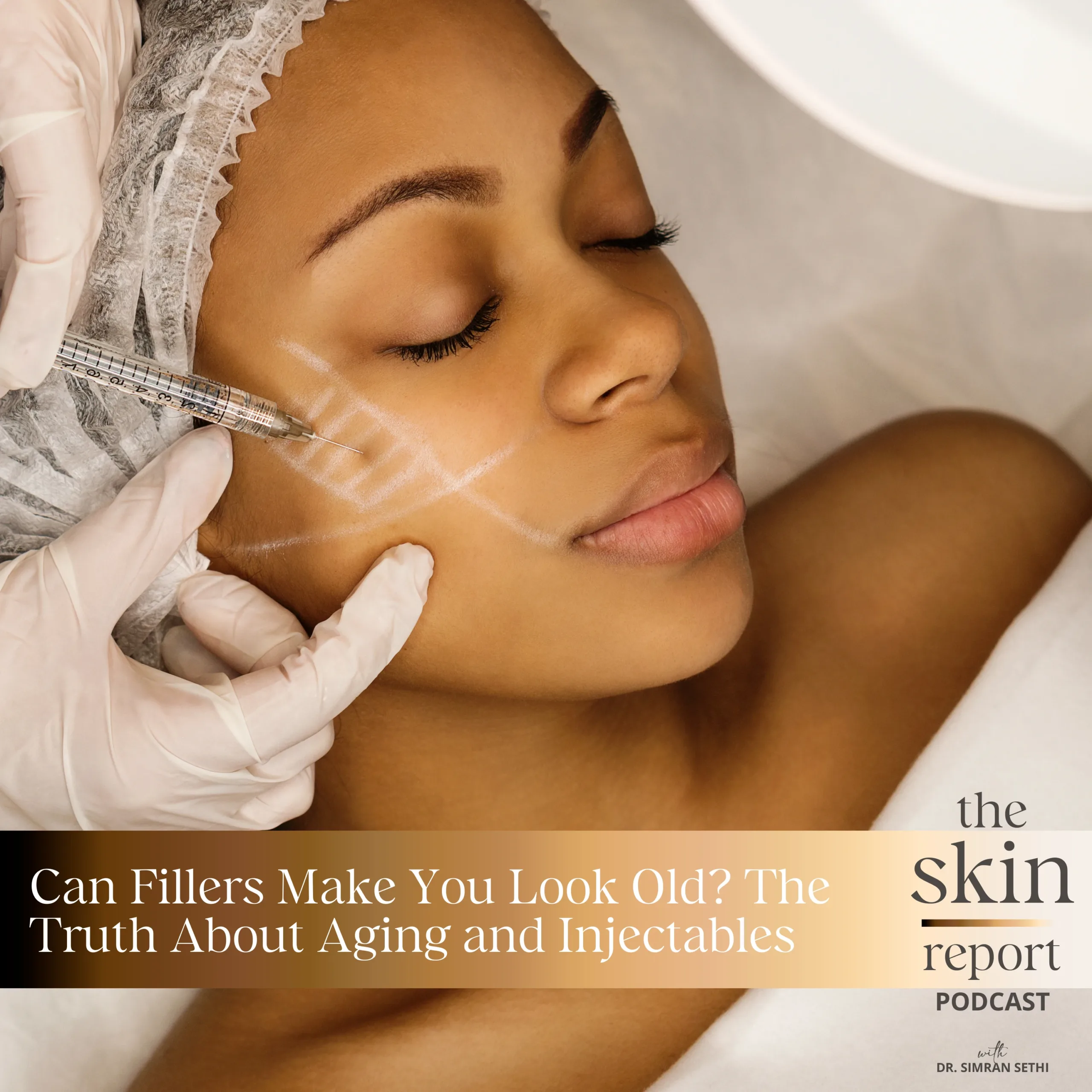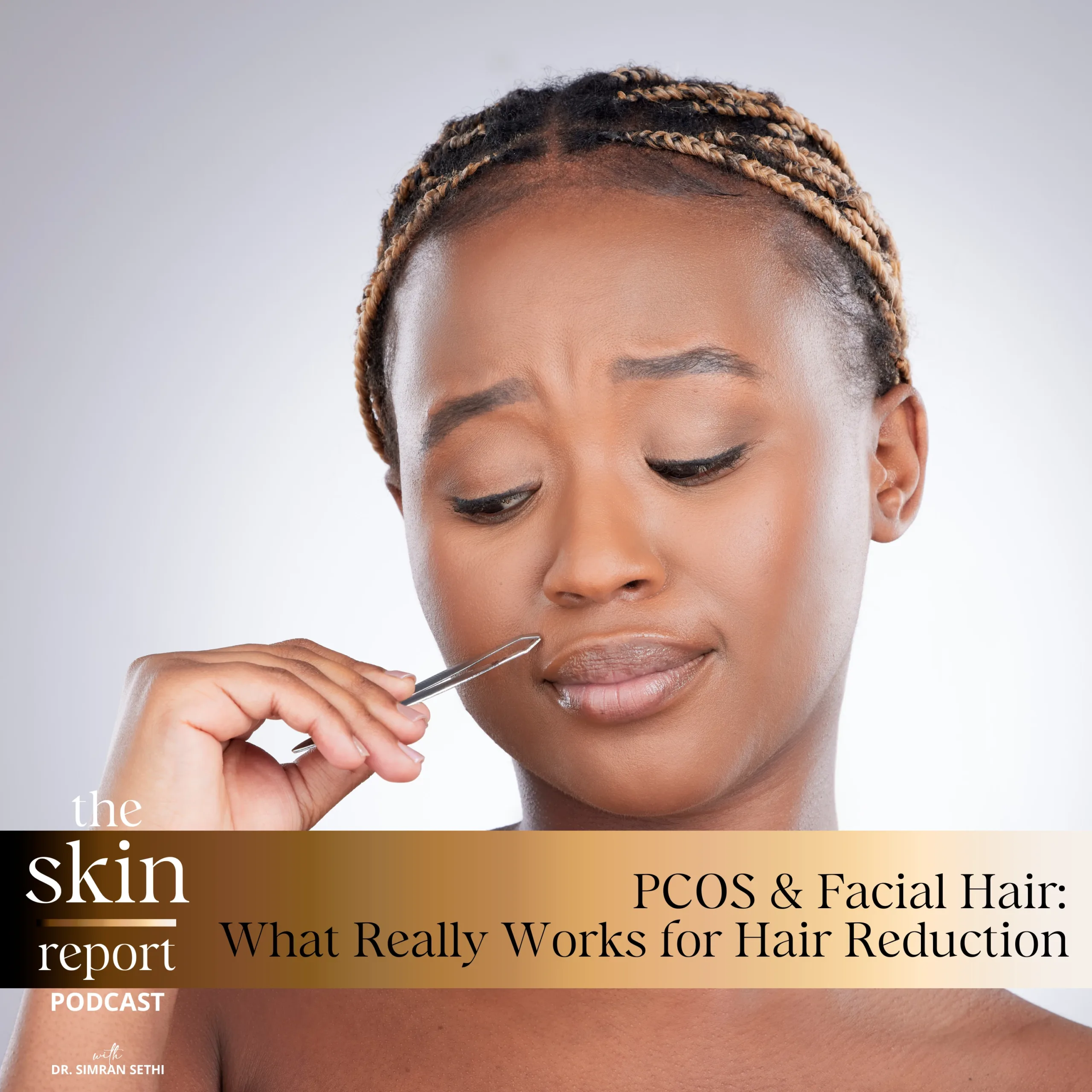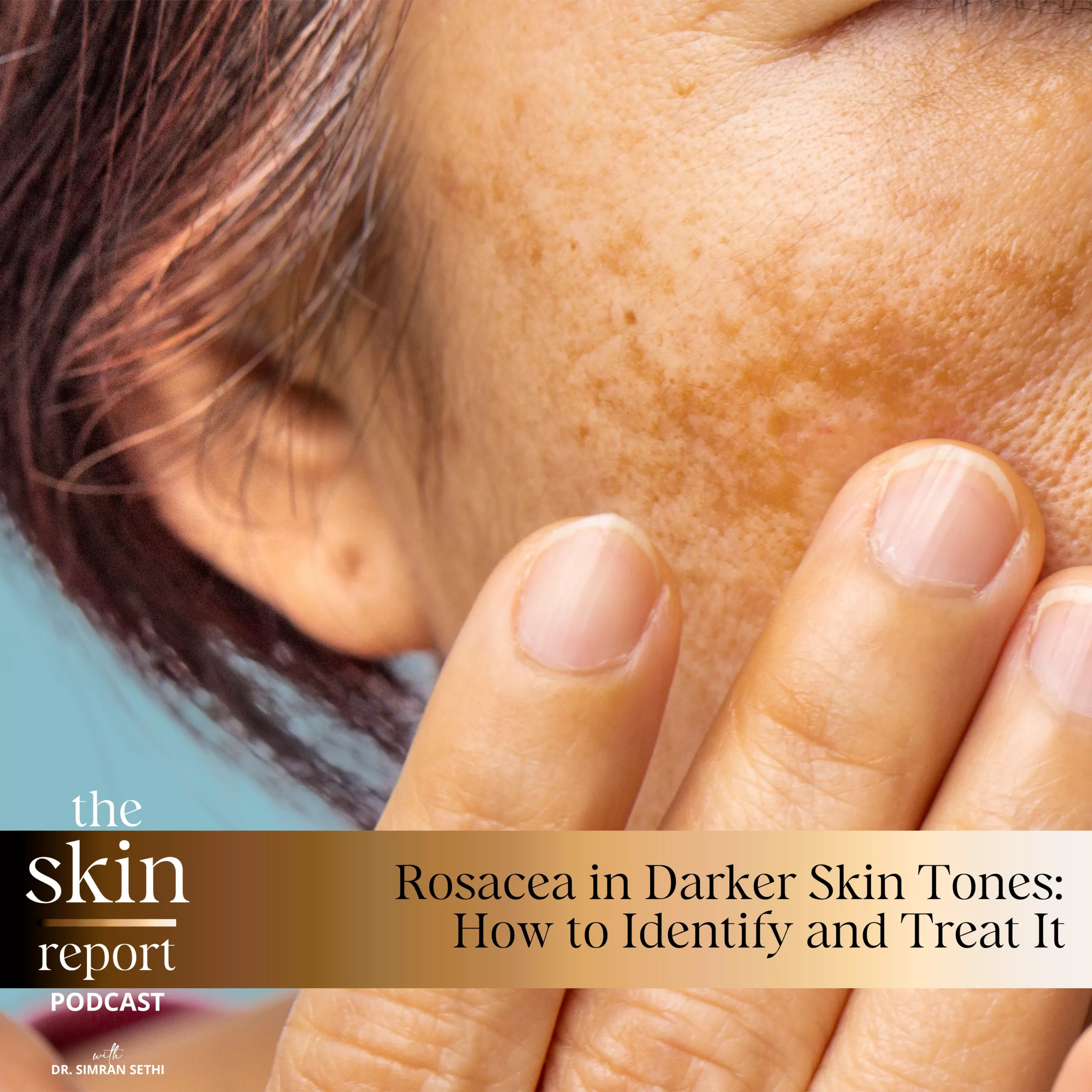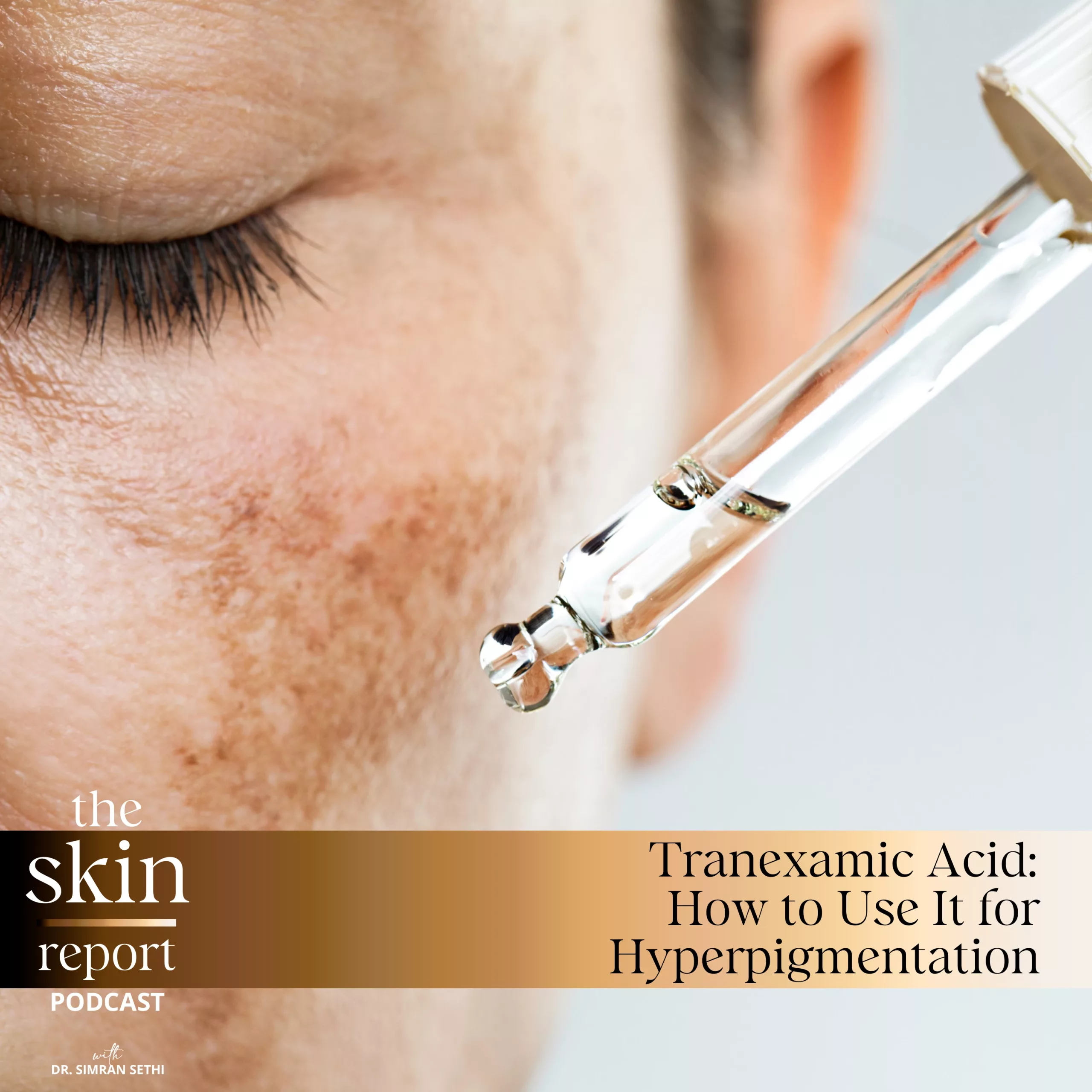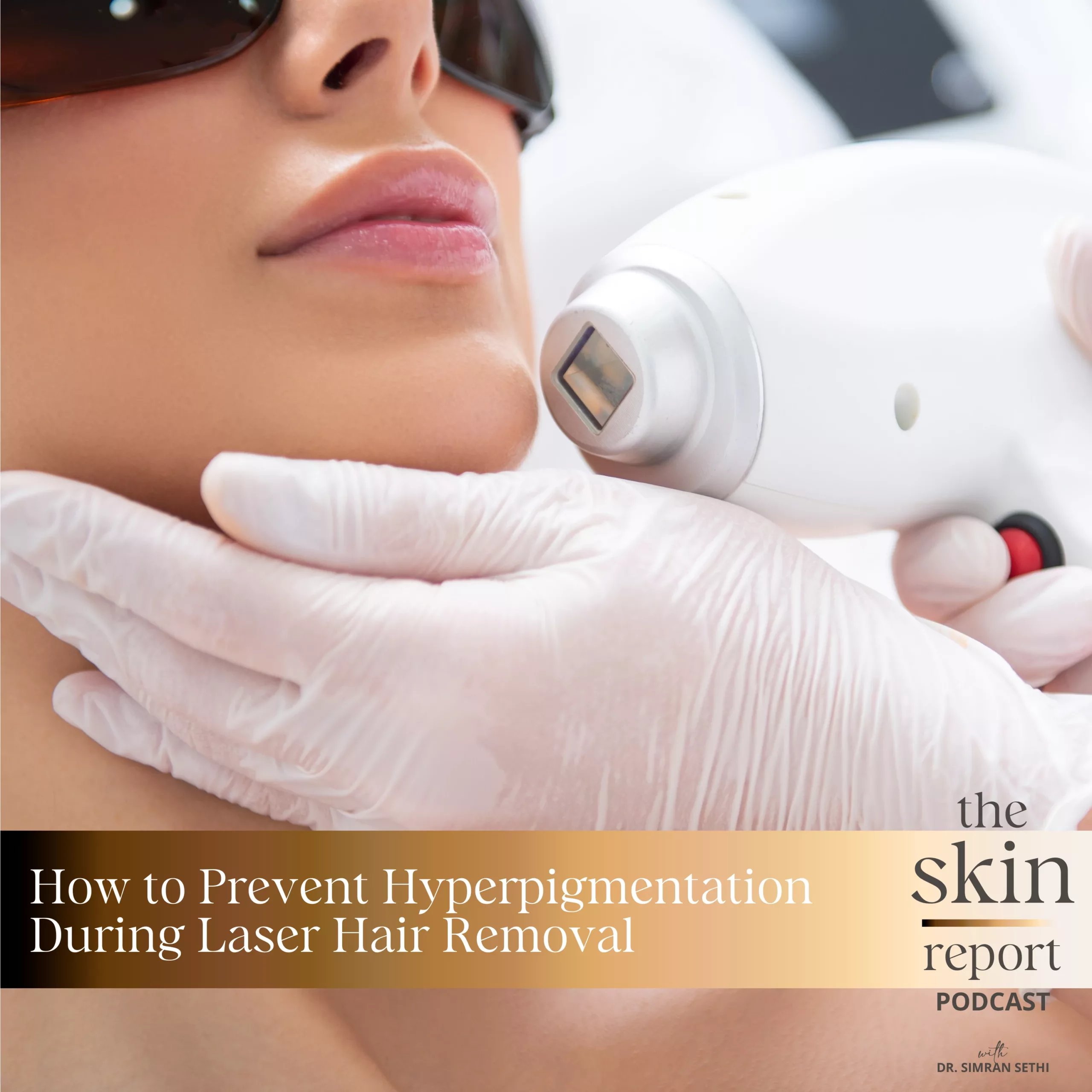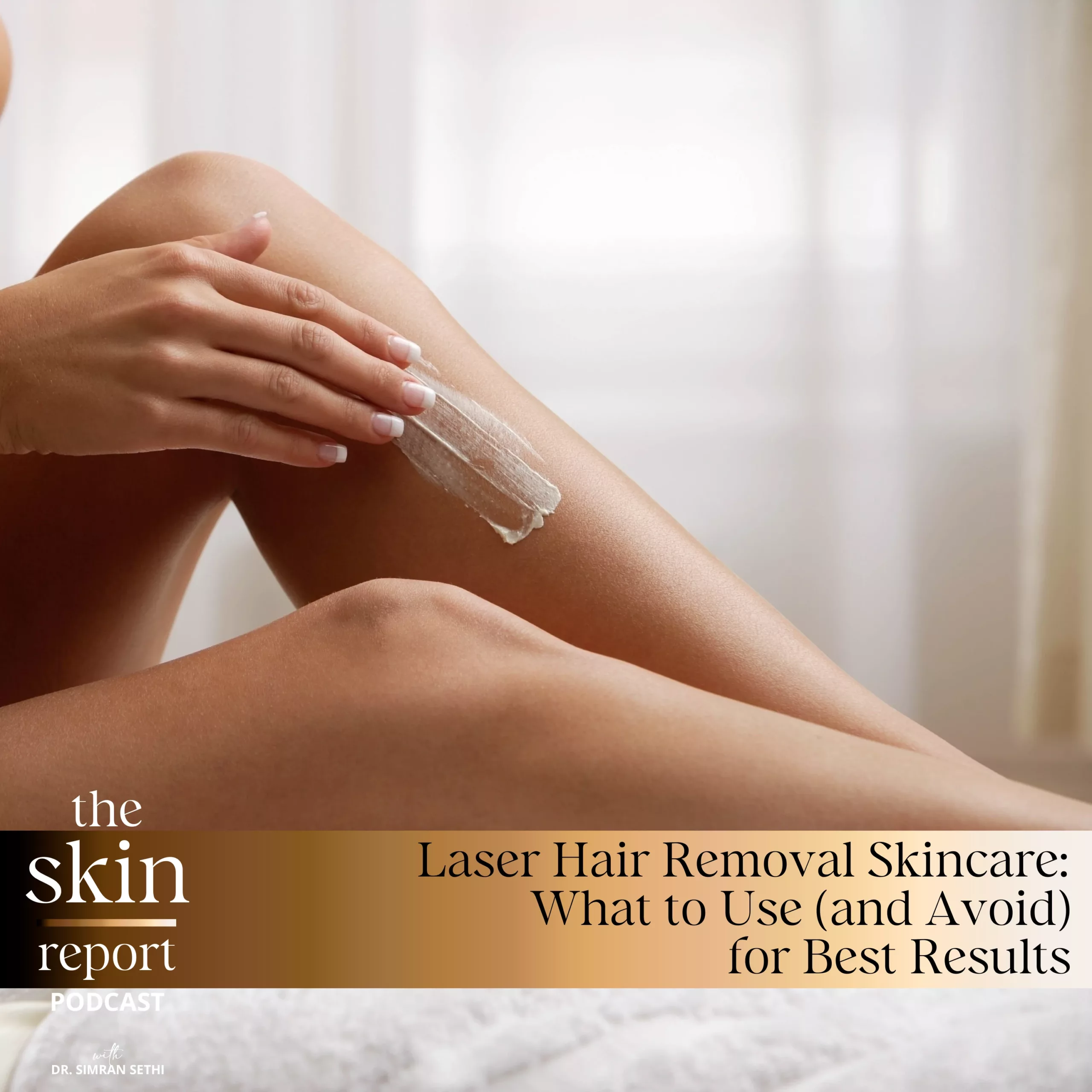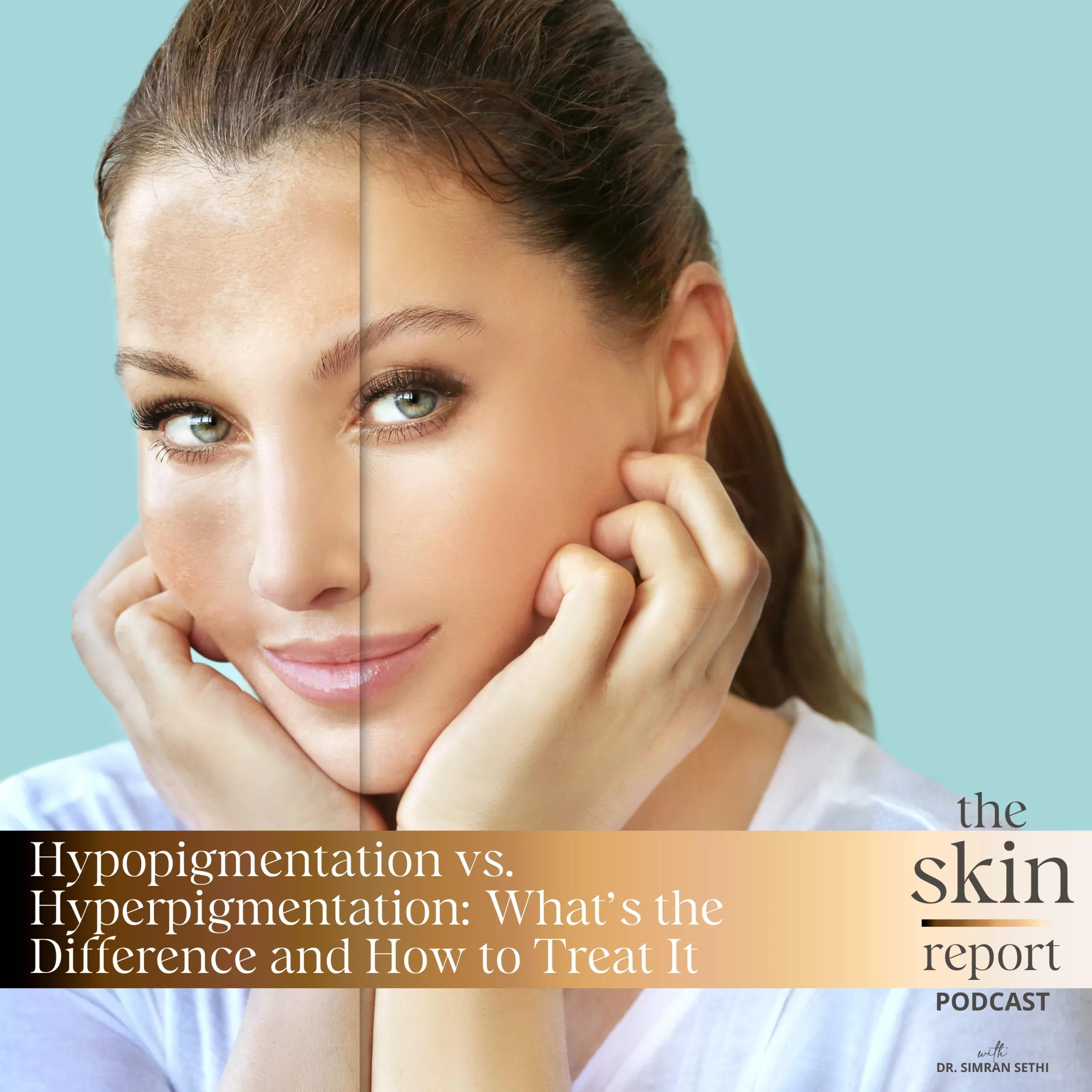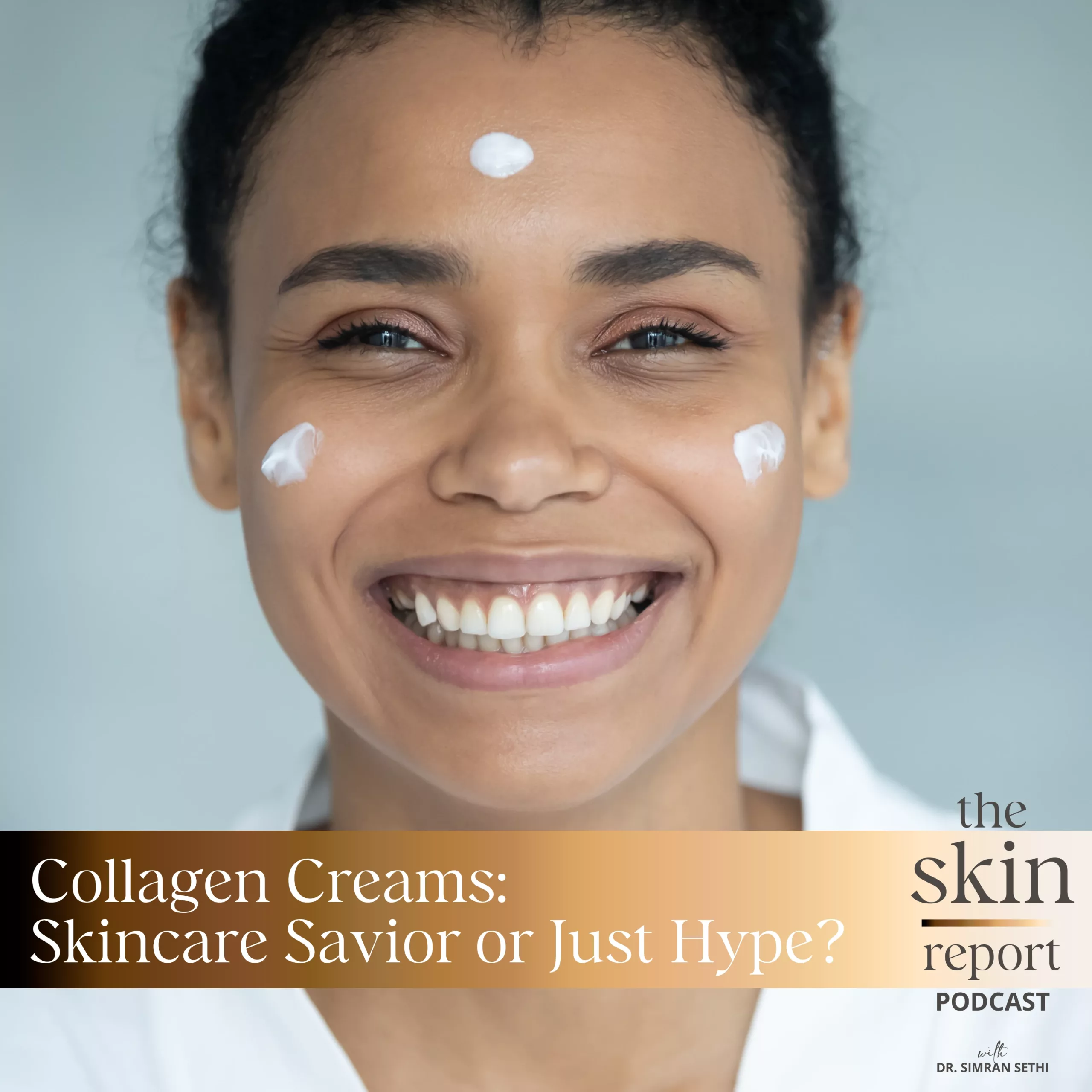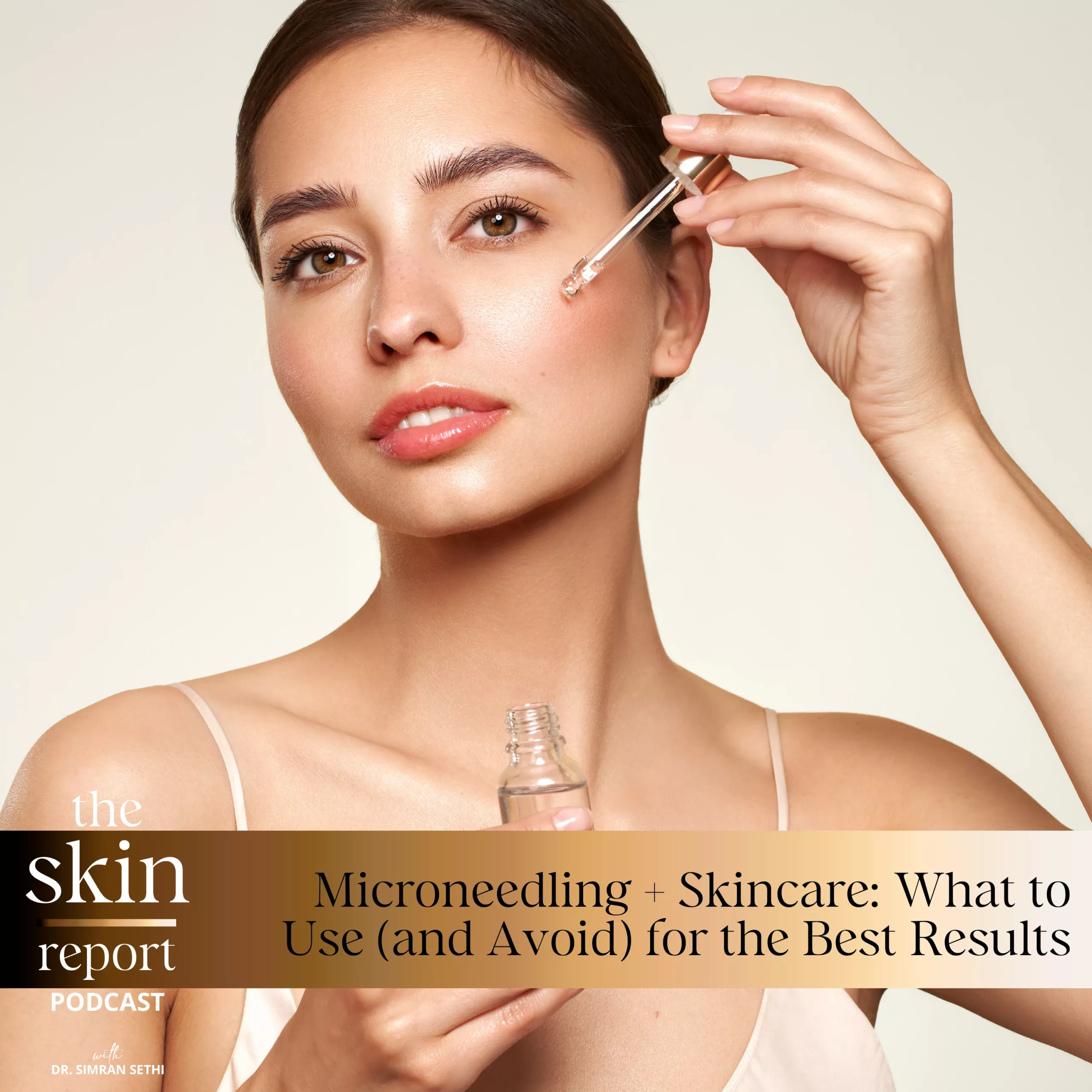Skincare fads come and go, and each new trend can bring mixed opinions, opposing ideologies, and different approaches regarding the best steps to care for one’s skin. So when some beauty influencers recommend a ten-step skincare routine and others take a more minimalistic approach to skincare, it can be difficult to determine which parts of the care process are necessary for maintaining healthy skin. Of course, skincare is not cut and dry, and skin care steps that benefit one person’s skin conditions may be unhelpful for another. So which components are necessary for a great skincare regime, and what factors should you consider when developing a routine to care for your skin’s health?
The Skin Report is a podcast created to educate listeners on methods to improve skin health for people of all ethnicities and ages. Determining the best routine for your skin health can depend on various factors that are unique to you. So for this episode, host Dr. Sethi will break down each of the four skincare routine steps essential to a healthy skincare routine and dives into what they are, why they contribute to skin health, and how to apply them. Dr. Sethi also shares her professional insights on the important factors impacting your skin health and what aspects you should consider when putting together your skincare routine.
Follow and DM a question for Dr. Sethi to answer on The Skin Report Podcast: RenewMD
Beauty Instagram: https://www.instagram.com/renewmd_beauty/
RenewMD Beauty Medical Spas, California: https://renewmdwellness.com/
https://renewmdwellness.com/are-you-using-hyaluronic-acid-correctly/
https://renewmdwellness.com/bad-air-quality-and-your-skin-health/
https://www.ncbi.nlm.nih.gov/pmc/articles/PMC6777699/
https://www.dermstore.com/blog/different-types-of-cleansers/
https://www.health.harvard.edu/blog/the-hype-on-hyaluronic-acid-2020012318653
https://www.mcgill.ca/oss/article/health-quackery/hyaluronic-acid-all-hype
This transcript was exported on Jun 21, 2022 -view latest version here.
The Skin Report Episode 6
Skincare can sometimes feel overwhelming, whether it’s finding the right products, ingredients or treatments. There’s a lot out there, but not always for women of color. That’s why I set out to educate myself and others so that we can all feel beautiful in our skin.
Hello, and welcome to The Skin Report. I’m Dr. Simran Sethi, an internal medicine doctor, mom of three, and CEO and founder of Renew MD Medical Spas and Skin by Dr. Sethi. Today, I want to talk about the foundations of the best and most effective skincare routine. Our skin is our largest organ and it protects us from the elements, which means that it has to be protected, repaired and renewed in return.
No matter our skin type, skin tone, or even our lifestyle, we all need to treat and take careof our skin so that it can protect us, as well as keep us looking fresh and beautiful. There is a ton of information and misinformation out there about the best skincare routine. Some people recommend a minimalist approach, while others embrace a seven toeight-step process. There are numerous trends and fads on social media that are not always supported by science and can sometimes even be harmful to the skin. Then there are tons of influencers pushing products left and right without knowing what types ofproducts and ingredients are safe for their wider audience. The amount of information and opinions can be so confusing for anyone. If you’re just starting to educate yourself on skincare, all of this can feel overwhelming. That’s why I began The Skin Report, to give research and experience-backed advice on what you really need and what you don’t.
In order for a skincare routine to be effective, it should mimic the skin renewal cycle, which we discussed in our very first episode. An effective skincare routine for your skin renewal cycle should include these steps. Start with cleansing, then moisturizing, then applying something that locks in your moisture, and last but not least, a full spectrum sunblock, which provides UVA, UVB and HEV protection. For this episode, we will break down each of the skin care steps, what they are, why they’re important and how to do them.
The first step in a proper skincare routine is cleansing. This must be done before anything else and for all skin types. Throughout the day, we collect on the surface of our skin dirt, debris and dead skin cells from the stratum corneum, which is the outermost layer of the epidermis, our most superficial skin layer.
The environment you live in also plays a big factor in your skin health. For example, if you live in a metropolitan area, you may experience more irritants brought on by air pollution than if you live in a rural area. Studies have shown that air pollution can also trigger skin aging and inflammatory conditions such as eczema, psoriasis and acne. This is why it’s so important to cleanse your skin at night, to take off all the debris that has collected during your skin throughout the day.
It’s equally imperative to also wash your face in the morning, as an effective cleanser will not only leave your skin looking more polished, but also improve product absorption during the next steps in your skincare regimen. We’ll get into the difference in morning and nighttime routines later on in this episode, but for now, it’s important to remember that we should cleanse at least twice a day.
There are different types of cleansers, such as gel, cream, foam, oil and more. Different types of cleansers are best for either dry, oily or combination skin. For example, dry skin does best with a gentle cleanser, which will help remove all the debris that dry skin naturally has more of, while not stripping away natural skin oils. This could be its own episode, and it will be soon. For now, you can check out episode five on skin type and tone to help determine what your skin needs.
Once your skin is clean, the second step of the skincare routine is to apply a serum and/or moisturizer. The ideal serum and moisturizer will nourish and repair the skin throughout the day and night. There are specific serums for dry, oily, and combination skin. A commonly used and important ingredient in serums should be a stabilized vitamin C. Vitamin C is frequently associated with skin brightening, as it accelerates skin repair from free radical damage caused by UV and pollution exposure. It helps improve collagen production and lighten sun spots as well.
Another skin antioxidant that works very well, especially for oily skin, is green tea extract. Green tea extract is also an excellent choice for people who have a lot of skin sensitivities, inflammation and redness, and interestingly is a better option for people who are very sensitive to vitamin C. In fact, a green tea serum is my go-to serum for oily skin. In order to see results from a green tea serum, it’s important to use a green tea serum which is purified correctly to increase the dose of actual antioxidant delivered.
The third step in a good skin care routine is one that many people skip over, probably because it’s rarely discussed. This step is moisture protecting or moisturesealing. Using a serum that contains hyaluronic acid helps lock in skin’s moisture and natural oils. This ingredient is important for every skin type and skin tone because hyaluronic acid protects your skin barrier.
You’re probably wondering, why does moisture need to be protected on our skin? Humans are warm blooded and warm bodied, which means that our skin is constantly losing moisture to the air. You experience this every day, but may not realize it. Have you noticed that soon after applying a moisturizer your skin feels soft, but then starts feeling dry just a few hours later? This happens because the moisturizer evaporates off your skin within just a few hours of application.
This moisture loss does not only happen on dry or normal skin, but also occurs on oily skin. If you have oily skin and you wash your skin, your skin probably feels normal, but after a few hours it forms a new layer of oil and sebum. This happens because cleansed skin will start losing your naturally-produced moisture to the air and this signals your skin to produce more oil to prevent the skin from getting dehydrated. As a result, there is a thicker layer of oil and sebum on the skin within just a few short hours.
To prevent loss of moisture in every skin type, it’s important to apply a moisture protectant like hyaluronic acid, which is a large molecule that holds up to 1,000 times its weight in water. This effectively means that one molecule of hyaluronic acid can bind to 1,000 molecules of water. By binding to water, it keeps water from escaping from the surface of the skin. Hyaluronic acid can come in serums, balms, and even injectables.
Though hyaluronic acid is so important, people frequently use it in the wrong step in their skin care routine. Many apply it before or with theirmoisturizer or serum, but it actually works best when applied over a serum or moisturizer. By doing so, it will protect and lock in moisture on the skin and also prevent overproduction of oil in oily skin and excess skin dryness in dry or combination skin. Basically, it completely balances the moisture and oil levels in the skin, leaving it plump and healthy, no matter what skin type you are.
There are other ingredients that reinforce locking moisture into the skin. For example, in my skin care line, my hyaluronic acid serum also contains an additional active ingredient, snow mushroom extract. It’s a smaller molecule that fills gaps between the larger hyaluronic acid molecules. Here’s an analogy I like to use to explain and simplify this. Think of a layer of large spheres on the skin. Due to their shape, there will be gaps between each sphere or hyaluronic acid molecule. The smaller spheres of the snow mushroom extract can fill in these gaps. The two different sizes of the hyaluronic acid and snow mushroom molecule create a continuous layer of moisture protection for the skin.
In summary, when you are looking for a moisture protecting serum, such as hyaluronic acid, make sure it is the first ingredient listed on the package, which means that it is potent enough to create a strong moisture barrier for your skin. When we return, we’ll cover the final step in a proper skincare routine.
The last step of the ideal skincare routine is UVA, UVB and HEV protection, AKA sunblock. Since we’re so familiar with the importance of sunblock, I’m going to use this opportunity instead to debunk some myths surrounding UV and HEV protection. Not only is UV protection important, so is HEV, AKA blue light protection. There is significantly more blue light in the atmosphere than UV light. Electronic devices like phone screens, computers and indoor lighting also have shown to emit blue light.
Blue light has been shown to cause aging at a deeper and more accelerated level than UVA rays, which are already notorious for causing skin aging and wrinkles. You need to apply UV and HEV protection every day, rain or shine, even indoors. When we’re indoors, we are still exposed to UV rays from windows, and depending on our homes or offices, this can be a significant amount of exposure.
Many makeup products come with SPF, which is a great multipurpose option. However, using a quarter or dime-sized amount of makeup cannot contain enough active UV and HEV protection to spread and cover enough surface area on the skin. Simply put, it’s just not a sufficient amount to provide proper protection. Instead, I recommend using a multipurpose tinted SPF that you can generously apply and blend in with your skin tone.
Even for darker skin tones that don’t necessarily burn in the sun, but just get more tanned, it is important to consistently apply SPF to prevent skin damage and aging. Just because darker skin tones do not burn, their skin is still undergoing aging changes and damage with UV and HEV exposure.
When we return, I want to discuss the other really important factors to consider when putting together your skincare regimen, such as age, time of day and the season. All of this can impact your skin. When we’re back, let’s discuss how to navigate these changes.
Our skin is our largest organ. All our organs follow circadian rhythms, which are cyclical changes that occur in a 24-hour period. Our skin’s circadian rhythm enters an active repair mode at night, just like our brain, kidneys and the rest of our organs do. This is why when we don’t have enough sleep, our skin is one of the first things to show it. Due to this repair mode, we should provide all the nourishment we can to aid our skin renewal. Therefore, all nighttime routines should ideally include a powerhouse serum and retinol.
Retinol is a vitamin A derivative and really common as an acne treatment and skin anti-ager. It increases the rate of skin cell turnover, which means that it signals the body to make new skin at an accelerated rate, making clearer, stronger and smoother skin. As we age, our skin cell turnover and repair rate reduces, which is why retinol is really important for antiaging. In fact, retinol is safe and amazing and can be used by anyone above the age of 16.
We discussed in depth the best ways to use retinol in episode three of The Skin Report. Just to briefly summarize what I discussed in episode three, you can start by applying retinol once a week at night only, then slowly increase from there. By applying it only at night, we can optimize the skin’s active repair mode. If used in daytime, retinol breaks down in sunlight and leave us more sensitive to UV radiation, so never apply it during the day.
Our skin is a dynamic organ that protects us from the outside, and it can have specific needs in specific environments too. For example, ifsomeone with oily skin moves to a warmer, dryer climate, they will lose more moisture to the dry heat and, in response, produce more oil. This would mean that moving to a dry climate will make it very important to incorporate a moisture-protecting ingredient like hyaluronic acid on top of their daily serum. Likewise, if someone with dry skin moves to a more tropical or humid climate, they may have to switch to a lighter moisturizer, as their skin is not losing as much moisture due to the humid climate.
Just like climate impacts our skin, every season of the year can bring new requirements and adjustments to your skin and, consequently, your skincare routine. Many people add a rich moisturizer in the winter and go back to a lighter moisturizer or serum once the weather warms up. Remember, don’t assume that your current skin care regimen doesn’t work for you anymore, just make a small adjustment to account for change in weather.
Lastly, our age plays a huge factor in how we build a proper skincare routine. Ourskincare routines should evolve with our skin and age. Typically, younger people, especially women, produce more oils due to their elevated estrogen levels, which means that they tend to have oilier skin types. As they age, and as estrogen levels fall, especially close to menopause, women may begin noticing that their skin suddenly becomes dry and fine lines and wrinkles become more noticeable. Low estrogen levels lead to reduced production of collagen, elastin and oil, all three things that protect the skin’s integrity and elasticity.
A large study conducted by the American Academy of Dermatology discovered that in the first five years of menopause a woman’s skin loses about 30% of its collagen. Over the next 20 years, women will continue to lose about 2% of their collagen every year thereafter. Because of these hormonal changes, mature women should always incorporate lipid-rich serums into their routines. You can get further insight about what your skincare routine should look like at every age in episode three of The Skin Report.
No matter your budget, age, environment or lifestyle, it’s best that you incorporate a cleanser, moisturizer, moisture protector, and a UV and HEV protector into your skincare regimen. The great thing is there are lots of productsout there for different skin types, ages, environments, and so on, just as long as you keep these four skincare steps in mind. This simple routine will leave your skin happy, healthy and glowing.
If you’d like to learn more about science-backed skincare or medical aesthetic treatments, please subscribe to and turn on notifications for The Skin Report so you always know when a new episode is up. If you have a skincare question or want to make an episode topic recommendation, please message me at theskinreportbydrsethi.com, which is linked in my show notes. I’ll be sure to answer your question in an episode soon. Thanks for listening, and until next time, love the skin you’re in and celebrate your beauty.
Transcript by Rev.com


